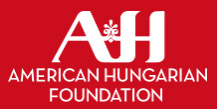William Penn Life, 2002 (37. évfolyam, 1-11. szám)
2002-04-01 / 4. szám
agyar Danube River reaches highest levels in 50 years as spring floods hit Hungary from The Budapest Sun BUDAPEST -- The River Danube rose to its highest levels in over half a century the last week of March, according to the Ministry of Transport and Water Management, (KöViM) causing minor flooding in several towns along its banks, including several areas of Budapest, bringing traffic chaos to the city. The capital actually escaped the worst of the flooding. The highest level measured along the Hungarian stretch of the Danube was 816 centimeters in the southern town of Mohács. The Gemenc forest, also in the south, saw considerable flooding and a loss of local wildlife. The lower riverside roads in Budapest were closed off shortly before flood waters began to submerge them March 24 and by March 28 the water level peaked at 767 centimeters. The capital escaped serious damage, but many holiday homes in the Római Part area of Óbuda in the north of the city were underwater on March 26 and 10 residents were evacuated from flooded homes near Lágymányosi hid in the south. Soldiers and council workers built a sandbag dike along the river at Szentendre north of Budapest, which largely prevented water from flooding over the existing stone dikes. By March 30 the waters had subsided. The riverside roads were cleaned up and quickly reopened. Passaic museum keeps traditions alive from The Clifton Merchant PASSAIC — As it enters its 21st year, the American Hungarian Folk Museum, at the Reid Library on Third Street in Passaic, continues its mission to bring the arts and culture of Hungary to a wider audience. The museum, in two rooms on (he second floor of the library, features an eclectic collection of artifacts of Hungarian history and culture. "Our intention is to keep and preserve the Hungarian culture and folklore," said Emese Kerkay, the museum's longtime curator, who estimated that about 600 Hungarians live in Clifton. Like many immigrants, their relocation to northern New Jersey came about as a result of three waves of immigration. The first was between 1880 and 1914 as Hungarians flocked to the area's textile factories. The second wave, composed mainly of political dissidents, was in the 1920's. The third and most massive influx was the period following World War II and the unsuccessful rebellion against the Communists in 1956. Since the 1980's, the most recent immigrants are ethnic Hungarians fleeing unrest and repression in Romanian Transylvania. But it seems no matter where they are from or when they migrated to America, interest in the homeland remains and support for the museum continues. Kerkay said the museum is open for limited hours and tours, or viewing can be arranged by calling (973) 478-5926. Teller receives Hungarian Corvin Medal from Magyar News Dr. Edward Teller, the world-famous physicist best known for his work in atomic and nuclear physics, was honored recently with the Hungarian Corvin Medal, bestowed by the Hungarian government for exceptional achievement in the arts and sciences. At a private ceremony held at his home at Stanford University, Teller, 93, spoke in Hungarian as he thanked Hungarian officials. "I may not have deserved it, but I have certainly enjoyed it," he said. Hungarian festival NEW BRUNSWICK, NJ - What captures the feeling of Hungary better than someone stirring a kettle of gulyás? You can experience all the sights, smells, tastes and sounds of Hungary on Saturday, June 2, during the 27th Annual Hungarian Festival in New Brunswick, N.J. The festival will be held along Somerset Street from 11:00 a.m. to 8:00 p.m. The day will feature Hungarian music, folk dancing, food, desserts, arts and crafts. For more information, call the American Hungarian Foundation at (732) 846-5777. Dinner-dance set PITTSBURGH - The American Hungarian Social Club will host a dinner-dance on Saturday, April 27, beginning at 6:30 p.m. Tickets are $ 15 per person. The club is located at 120 Flowers Ave., in the Hazelwood section of Pittsburgh. For tickets and more information, call (412) 521-9802. William Penn Lite, April 2002 7
